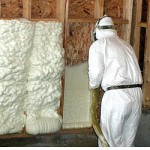Wed 10 Jul 2013
7 air pollution hazards in your home
Posted by admin under Asbestos, Asthma, Building Survey, Chemical Exposure, Exposure, Formaldehyde, Gloves, Health & Wellness, insulation, Lead, LEED, Mold, radon, Risk, ventilation
Comments Off on 7 air pollution hazards in your home
Industrial hygiene (aka occupational hygiene) focuses on occupational-related diseases due to many reasons.
Have you considered, at your home, maybe even as you sleep, you might be exposed to something hazardous? Below are seven possible hazards in your home (related to IH):
- Radon. It comes from the ground and they say it causes cancer* (*some people question this toxicological data). You must perform a test to know if you have hazardous levels.
- Formaldehyde. If you have a newer house you have 2 things going against you: 1. your house is tightly built (no air leaks and limited fresh air) and 2. more particle board (recycled wood) was used in construction. Also, many furniture contains multidensity fiber wood (MDF) which off gas formaldehyde. Again test for it to know if you have dangerous levels.
- Lead. Is your house built prior to 1978? It probably has leaded paint. Any remodeling might distrupt it and you can expose your kids to lead.
- Isocyantes. (HDI, TDI, MDI, and others) Can cause asthma & respiratory issues. If your house was insulated with spray foam (polyurethane type) it needs to off-gas for awhile before you move right in.
- Asbestos. Causes cancer when airborne. If your house was built prior to 1980, you might have asbestos in your pipe insulation, popcorn ceiling, etc. Be sure and have it checked prior to remodeling.
- Mold. Respiratory diseases.
- Cleaning products. The symptoms can vary depending on the type of chemicals in the product. Use the recommended gloves, eye protection and respirator, if necessary, while cleaning with chemicals.
Do not be overly concerned about any one thing. Simply test and make any necessary adjustments. However, do keep in mind that most health recommendations for substances relate to normal working adults who go home to a non-hazardous place. There can be issues if you are either: not considered in the general population of healthy workers and, you go home to a place that isn’t free of additional hazards.

